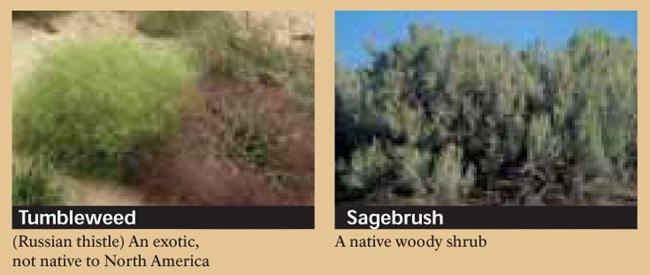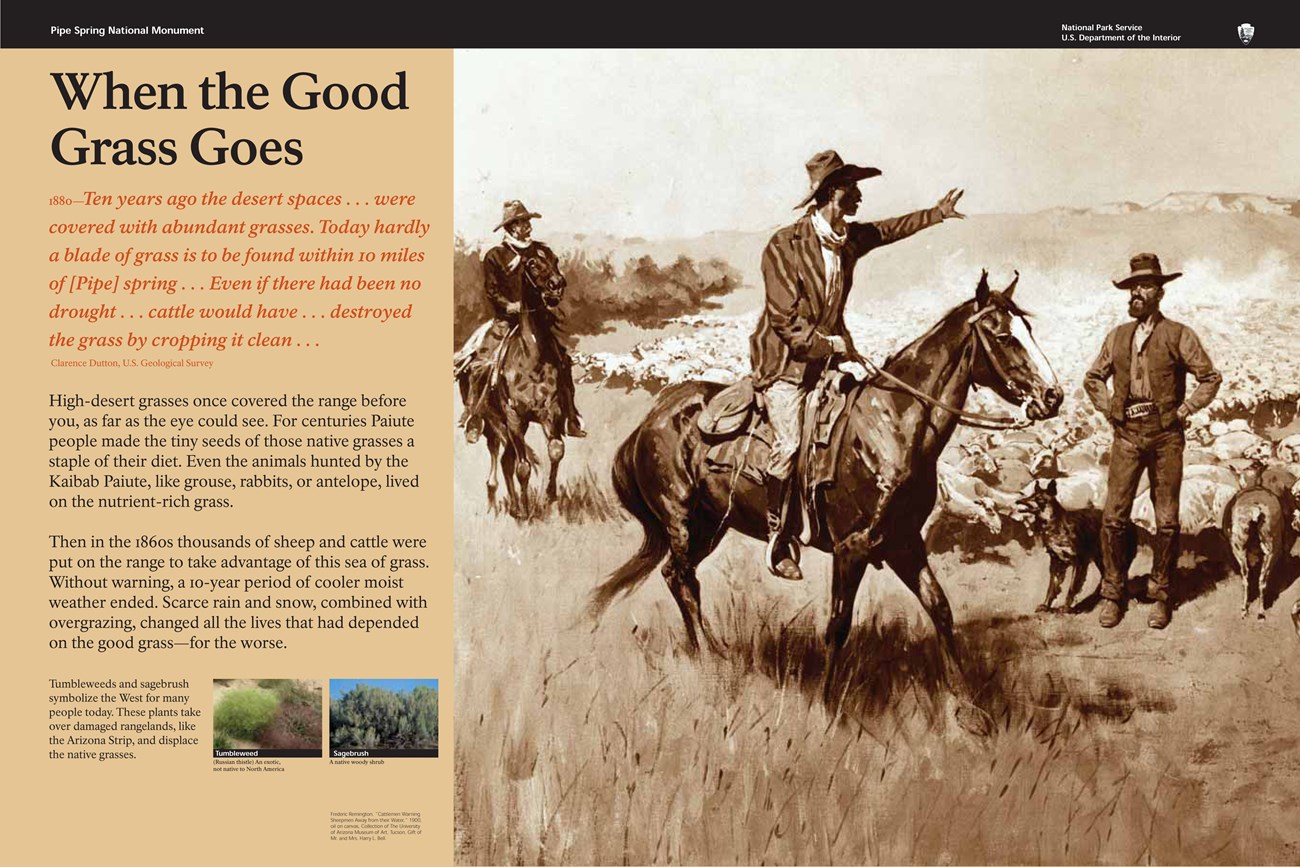|
1880—Ten years ago the desert spaces... were covered with abundant grasses. Today hardly a blade of grass is to be found within 10 miles of [Pipe] spring... Even if there had been no drought... cattle would have... destroyed the grass by cropping it clean...
Clarence Dutton, U.S. Geological Survey
High-desert grasses once covered the range before you, as far as the eye could see. For centuries Paiute people made the tiny seeds of those native grasses a staple of their diet. Even the animals hunted by the Kaibab Paiute, like grouse, rabbits, or antelope, lived on the nutrient-rich grass. Then in the 1860s thousands of sheep and cattle were put on the range to take advantage of this sea of grass. Without warning, a 10-year period of cooler moist weather ended. Scarce rain and snow, combined with overgrazing, changed all the lives that had depended on the good grass—for the worse. 

|
Last updated: January 11, 2017
